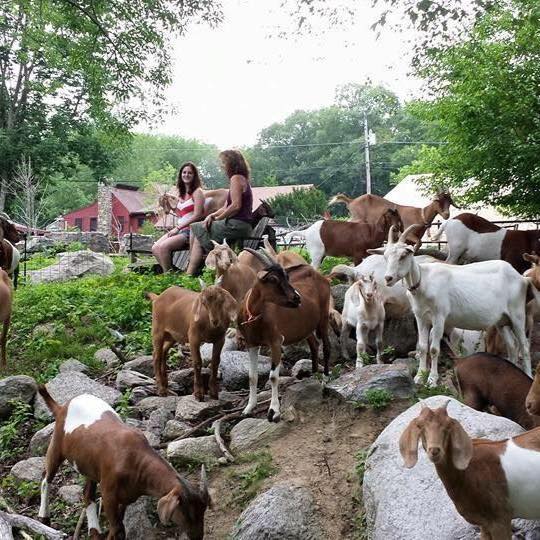by Ryan Yablonski
Would you trade your luxury car for an old Chevy filled with straw and animal hair? How about exchanging the magnetic resonance that comes from a steady urban flow of new people entering your life for the isolation of planting roots and stoically waiting for others to come find you? This article is less so a treatise on why farm life is great but rather an exposition on finding sustainable balance in life.
The vast majority of farmers in America are first- or second-generation. This means that even when the land is inherited, most people choose to sell farmland for real estate, rather than farm it. From a computational perspective, it just makes much more sense. One could realize one million dollars in profit in a year and then compound it over generations rather than waiting a lifetime, if ever, to amass wealth. Sustainability is a dubious prospect when equipment and infrastructure operate on a sliding scale of depreciation and monetary inflation. In most cases, the only sensible agricultural model is to go big. So long as you are willing to take on multiple mortgage-sized loans and expose yourself to risk, it is more reliable to profit on larger acreage with massive machines than to maximize every square inch of a small operation.
For small farms, sustainability involves a hybrid model. One or both partners work jobs outside of the farm, their children provide some labor, and the US Department of Agriculture (USDA) and Small Business Association offer grants to help subsidize operational costs. For example, USDA grants cover the cost to build a greenhouse or an open-air high tunnel for free each year, as long as the family can put together the sweat equity to spend their weekends working on the construction. The Veteran Farmer Coalition & VA loans assist many former servicemen and there are also Forestry grants which compensate for clearing wildfire hazards, establishing habitat, and preserving the health of the most valuable trees on your land. Airbnb rentals and leasing land for solar energy infrastructure have emerged as new ways to cover expenses as well.
With the sustainability side of the small farming puzzle solved, the fun can begin. At this late stage, you actually choose the mixture of crops and livestock to meet your needs. Stonehenge Farm, which is owned by two Brooklyn expats and located in North Eastern Rhode Island, provides one example. Nubian goats are the primary livestock. They spend the year maintaining the aesthetic of the property by trimming pasture but also removing invasive vines from trees helping to satisfy a state forestry plan. Their dairy is processed into soap and cheese sold locally at farmers markets and orders are also taken for USDA approved meat as well. Tomatoes are grown in high tunnels while garlic has emerged as the most sought-after crop. Fertilized by their livestock, this local fresh garlic has become a favorite because of its sharp, juicy, and complex profile, which is entirely unique compared to what is found in grocery stores.
Hosting farm tours and workshops with local culinary colleges are some of the ways the farm has expanded. As a hybrid model, it is a labor of love rather than profit. The greatest benefit the owners see is having a high quality of food and priceless tranquility. In the future, they hope to leverage those assets to establish a corporate retreat where startup ventures can use a tech-integrated green space for team building and inspiration.
Sustainability outside the city often involves more sacrifice than harvest. Truthfully, many people are wise enough to avoid pursuits that don’t make sense on paper. However, there is something about getting your hands dirty that tends to inspire the farthest reaches of our problem-solving abilities.

